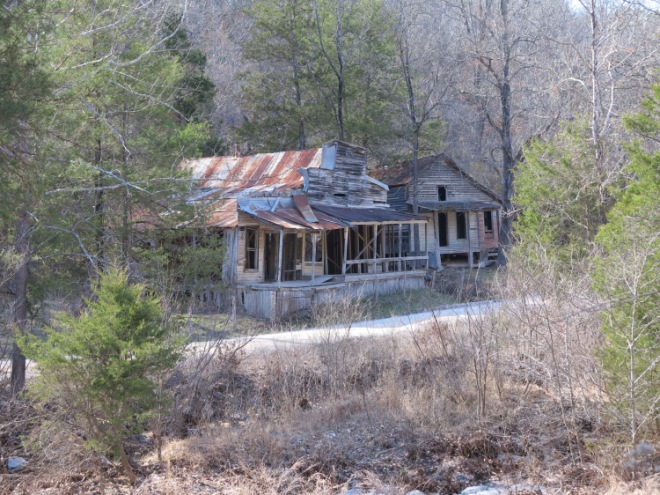Here’s a re-blog of fellow Arkansas writer, Susan A. Holmes, on ‘Folklore In Fiction’ with an excerpt from her book Deadly Ties. She will be speaking at the Fayetteville, Arkansas Public Library, October 11th from 2 – 4 p.m. Event will include her presentation, questions and answers, meet and greet, and books sales and signings. Don’t miss this opportunity to visit with the author. More information on the presentation can be found here.
And now, the re-blog:
Folklore in Fiction

The Yokum Dollar
I’m an “up close and personal” kind of researcher. So when I’m working on my regional series, that means I’m often out in the hills, meeting people and listening to the stories that have been handed down, one generation to the next, keeping the old legends alive. The story of the Yokum Dollar is one of those legends that I heard on multiple occasions, with each storyteller claiming some connection with the families involved. I stayed true to the heart of the tale when writing the legend into my own book, while fictionalizing elements as needed to suit the plot. Here’s the excerpt from Deadly Ties:
*
….Maggie wandered among the exhibits, watching craftsmen make brooms and baskets, tapping her foot to the dulcimer music, and listening to the storytellers who had drawn a sizable crowd in the shade of tall oaks. She stopped to listen to a woman dressed in a style Maggie imagined was common among frontier women long ago. Sturdy boots peeked out from beneath the hem of her skirt, and the simple cotton blouse she wore looked homespun. Her steel gray hair was tucked beneath a bonnet.
“This here story has been handed down through my family ever since 1826,” the woman told the audience. “That’s about the time the first Yokum—that’d be Jamie Lee Yokum—settled along the big river herabouts. My family farmed the land down-river from the Yokum place, which is how I come to know this tale.”
“This land belonged to the Chickasaw tribe, and they were good neighbors, always sharing what they had. They were good traders, too, and pretty near famous for their beautiful silver jewelry. They always had plenty of silver but nobody knew—’cept the Indians, of course—where it all came from. Some said it was from a silver mine, and some claimed it was Spanish silver, but nobody knew for sure.
“When the government decided they wanted the Indians’ land, the Yokums traded some of their wagons and supplies in exchange for information about the source of that silver. As the story goes, the Indians shared their secret with Jamie Lee. They told him where he might find some of that silver, and he told his brothers. Times being what they was, and money being about as hard to come by as an honest politician, the Yokums decided to use that silver and make their own coin. They minted their own dollars with that there silver. For years, people all over the Ozarks used the Yokum dollars as legal tender.”
The storyteller looked across the crowd. “Well, you can probably guess what happened next. The federal government didn’t take too kindly to somebody else making money. They didn’t like the competition, my granddaddy said.” There were chuckles and murmurs of agreement from some in the crowd.
“The federal agents confiscated all the Yokum dollars they could get their hands on. What they really wanted was the source of that silver, but Jamie Lee wouldn’t tell ‘em where to find it. After a while, the agents gave up and went back to Washington.”
The storyteller paused for a sip of lemonade. “It wasn’t long after that when Jamie Lee Yokum passed away. His two brothers died soon after, crossing the Rockies on their way out to California. Those men were the only ones who knew the Indians’ secret and they took that secret to their graves, but they did leave some clues in letters they’d written to their cousins. Over the years, a lot of people have searched high and low for that silver, but nobody’s ever found it. But who knows? Maybe you’ll be the one to learn the truth about the Indian Silver Legend.”
Deadly Ties © 2013
*
To this day, people continue to search for the famed silver, with many a treasure hunter convinced a mine or cave does indeed exist somewhere in the hills. Some believe the answer lies near or under Beaver Lake in Arkansas while others argue the location is Table Rock Lake in Missouri. And so the legend lives on…
Like this:
Like Loading...
























